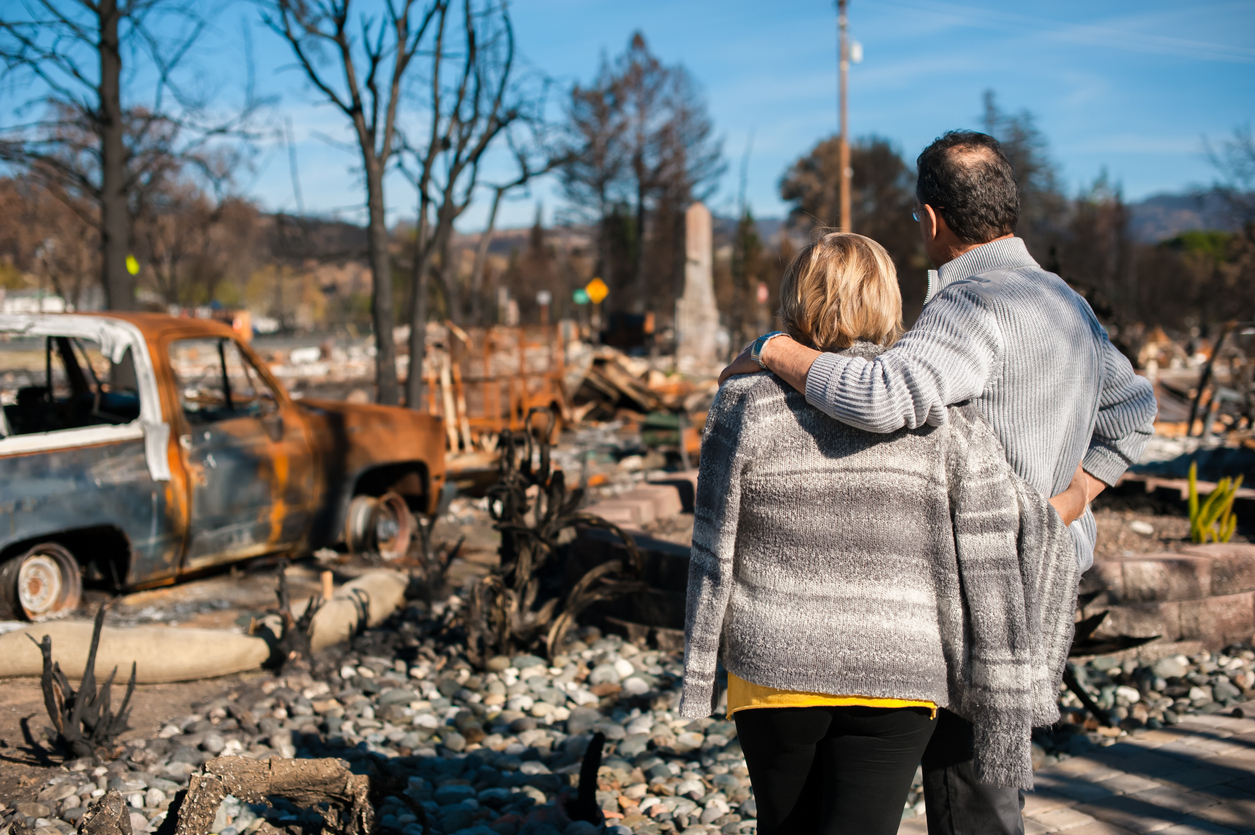California’s largest utility said Monday it was preparing to file for Chapter 11 protection before the end of the month as it faces more than $30 billion in potential liability costs related to its role in sparking wildfires in recent years. Electricity and natural gas would continue to flow to homes and businesses, PG&E said.
But a bankruptcy process would complicate attempts to recover wildfire damages and likely affect the state’s plans to reduce carbon emissions, according to lawyers, legislators and energy and bankruptcy experts.
The more than 750 civil suits brought by thousands of homeowners and insurers suing PG&E over wildfire damages would be immediately halted and resolved in a bankruptcy proceeding along with other claims.
Meanwhile some of the long-term contracts PG&E struck to buy electricity from wholesale power providers could be dissolved in a bankruptcy. Many of the contracts to buy power from wind and solar farms are well above current market rates because PG&E was among the first utilities to buy large quantities of green power, when it was far more costly than it is today.
PG&E declined to comment for this article.
PG&E has $34.5 billion worth of renewable energy contracts for electricity deliveries between now and 2043, according to a filing with the Federal Energy Regulatory Commission. In 2017, it said it procured about $3.3 billion worth of electricity, mostly wind and solar energy, and related services from Consolidated Edison Inc., NextEra Energy Inc. and other suppliers.
ConEd said it was monitoring PG&E developments. NextEra declined to comment.
Jan Smutny-Jones, head of the Independent Energy Producers Association, a California trade group that represents power suppliers, said he expects a significant percentage of PG&E’s renewable energy contracts could be torn up because they are expensive. He expressed frustration with California’s response to the crisis.
“Basically PG&E is lying on the ground clutching its chest and the regulator is saying, we’ll figure out what’s wrong in a proceeding,” he said.
Two renewable energy projects have already had their debt ratings downgraded in recent weeks because they rely on PG&E for the bulk of their revenues, including Topaz Solar, owned by Berkshire Hathaway Inc.
“Maintaining credit-worthy California purchasers for renewable projects is important to meeting the state’s renewable goals,” said Berkshire Hathaway Energy, its utility unit.
California Gov. Gavin Newsom urged PG&E to honor its contracts with power providers even in bankruptcy. The impending PG&E filing is emerging as the first major challenge for the new Democratic governor, who took office this month.
“We would like to see it avoided, but we are not naive, and it is not at all costs,” he told reporters regarding a PG&E bankruptcy Monday.
PG&E’s announcement that it is planning for bankruptcy came hours after Chief Executive Geisha Williams said she was stepping down. Shares plummeted 52.4% Monday to close at $8.38, down 82.9% since the middle of October.
That shares didn’t fall further is a sign that some investors believe there is a chance of a political deal that would preserve some value for stockholders. Under a new state law, PG&E had to provide a 15-day notice before filing for bankruptcy protection. So PG&E’s announcement starts the clock on a period during which politicians, regulators and the company can make a last-ditch attempt to find a solution outside of bankruptcy court.
However, several state lawmakers said that there was little appetite in Sacramento for a financial rescue. Public pressure has been building over the past few weeks against any sort of bailout. PG&E said Monday that it had concluded a bankruptcy filing was its only real alternative because state rescue efforts would likely take years, and it was running out of time due to deteriorating finances.
State Sen. Bill Dodd, who sponsored legislation that allows PG&E to pass along some of the costs of 2017 wildfires to utility ratepayers, said there likely won’t be any similar bills to help the company deal with fallout from the 2018 fires, adding that the costs were just too large.
“Moving forward, our eye is going to be focused on making sure the victims aren’t victimized yet again and that ratepayers aren’t crushed,” he said.
California fire investigators have determined that PG&E power lines sparked 18 wildfires in October 2017 that burned nearly 200,000 acres, destroyed 3,256 structures and killed 22 people. The state is investigating whether a PG&E high-voltage transmission line started last year’s Camp Fire, which killed 86 people in November, making it the deadliest fire in state history.
For plaintiffs suing PG&E, resolving the litigation through bankruptcy rather than the traditional court process has pros and cons, experts said. Wildfire victims should have equal priority to subsidiary bondholders in a bankruptcy.
Money could be paid out faster than through a drawn-out litigation process, but “the bargaining power they have by suing will be greatly diminished,” said Jared Ellias, a law professor at University of California Hastings College of the Law in San Francisco.
James Frantz, a California attorney representing around 2,000 wildfire victims, said he was unconcerned about resolving the claims through a bankruptcy. Mike Danko, an attorney with about 2,000 other clients affected by wildfires, took a dimmer view.
“They want to avoid compensating the victims,” Mr. Danko said of PG&E.













